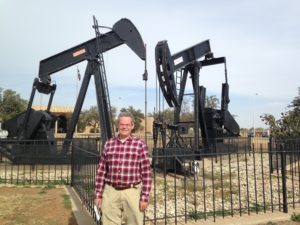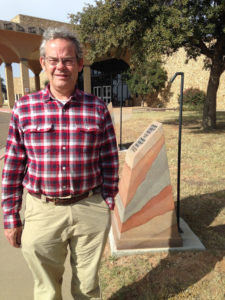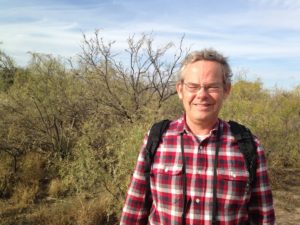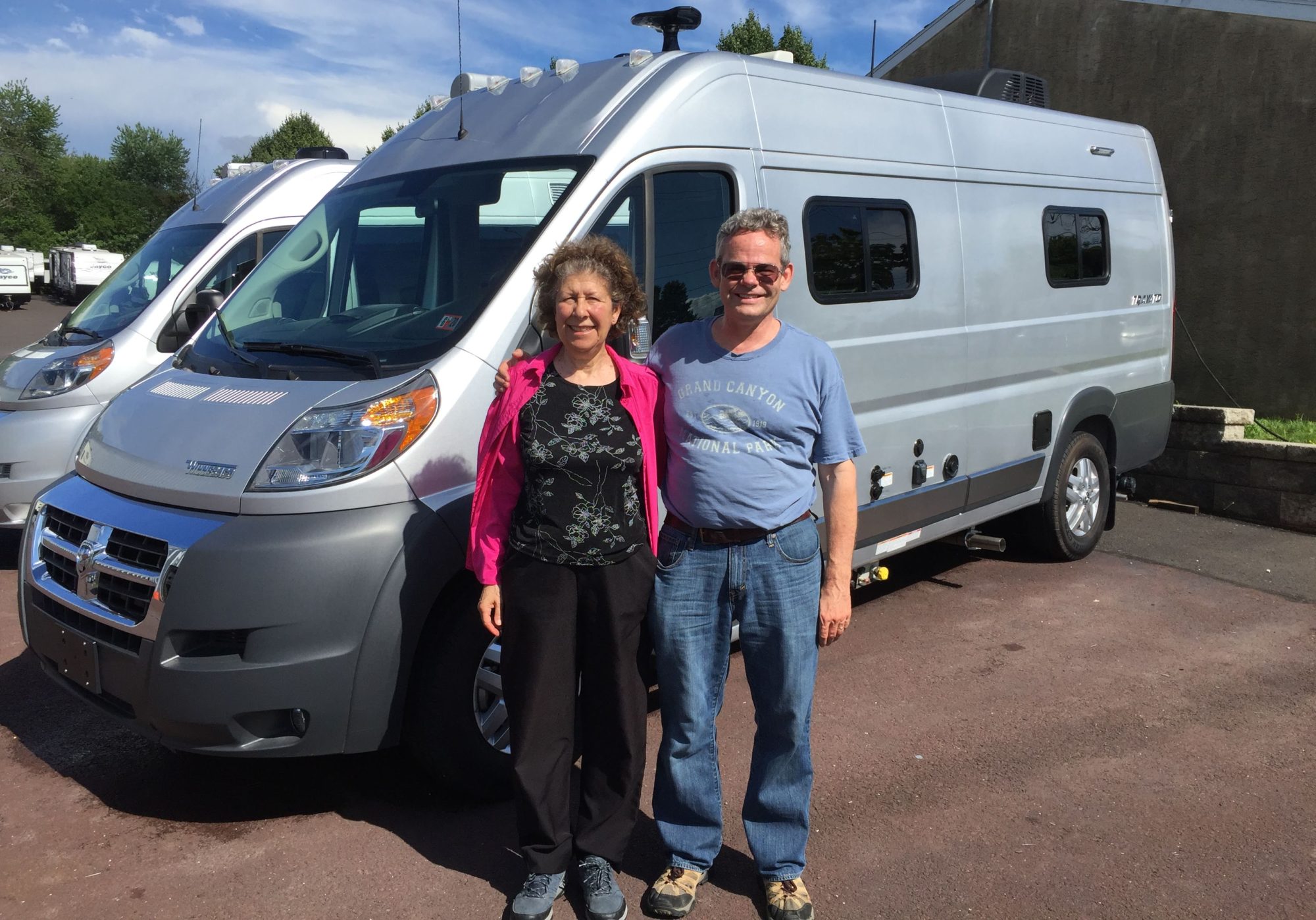Midland (Nov. 30 – Dec. 3)
For a place you probably never heard of, Midland has a lot to offer the visitor. Or, perhaps you have heard of it, since the Bush (as in 2 presidents) homestead is here. In any case, this is the heart of the Permian Basin Oil Field (and pumps are everywhere) and has (besides the Bush homestead site), an Oil Museum and several nature preserves.
Because we needed to reorganize after our long stay in Tucson and 2 long driving days, and we also needed a working day, we only had one day to sightsee in Midland. We decided to see the Petroleum Museum and the Sibley Nature Preserve (which allows dogs).
 The Permian Basin Oil Field is the largest oil repository in the continental US. Everywhere one looks there are nodding donkey pumps, like the ones shown here in front of the Petroleum Museum. This particular set of 3 there is a very small pump between the 2 larger ones) is interesting because all 3 pumps use the same shaft, but draw oil from different rock layers. Our understanding is that the pumps are driven by electric motors, and that the oil is directed by pipeline to a central repository.
The Permian Basin Oil Field is the largest oil repository in the continental US. Everywhere one looks there are nodding donkey pumps, like the ones shown here in front of the Petroleum Museum. This particular set of 3 there is a very small pump between the 2 larger ones) is interesting because all 3 pumps use the same shaft, but draw oil from different rock layers. Our understanding is that the pumps are driven by electric motors, and that the oil is directed by pipeline to a central repository.
 We found the Petroleum Museum interesting, but definitely directed at school children, with lots of information about how to get a job in the oil industry and interactive displays. There was some geological information about how petroleum is formed and deposits are trapped. I like the way that these historical markers outside the museum depicted the geographic strata as part of the marker.
We found the Petroleum Museum interesting, but definitely directed at school children, with lots of information about how to get a job in the oil industry and interactive displays. There was some geological information about how petroleum is formed and deposits are trapped. I like the way that these historical markers outside the museum depicted the geographic strata as part of the marker.
For me the most interesting thing I learned from the museum is that less than half the petroleum is extracted from the initial well. After that, water, CO2 and other chemicals are injected into the well to aid in the extraction. Many of the pumps we saw were surrounded by small tanks which we initially assumed were intermediate storage for the oil. Actually, they are subsidiary injection pumps used to help strip the wells.
The museum made the good case that what we consider to be our oil reserves depends a lot on economics. More petroleum and be found and more can be extracted from existing resources, but it might be more costly. On the other hand, new technologies can bring the cost down. Of course, the same factors dictate the relative cost of other energy technologies, and the museum pointed this out as well. (I note that oil-rich Texas also has the highest use of wind energy of any state at this point in time.)
The museum also has a very nice mineralogy section, with some very nice crystalline rocks. There is also an art gallery, with paintings by Tom Lovell about the oil industry. Finally, there is a racing car exhibit.
As always, we were not able to see the entire museum before we needed a break. So, we have a reason to go back.
After lunch we collected Rumple and went to the Sibley Nature Reserve. This reserve is on the Llano Estacado. It does not look like much, there is more to it than meets the eye. Fortunately, the trails are well marked with interpretative signs that made it much more interesting. There are also a lot of birds, so our binoculars and identification apps were handy.
The reserve looks quite dry, but the water is actually just below the surface. For this reason, there are lots of both fresh and salt water playas, These are shallow ponds which may dry out from time to time. During our visit, there was some water in a couple of playas on the reserve, and lots of water in a larger playa on the adjacent golf course. This large playa was full of waterbirds such as coots and various types of ducks. As well, shallow areas that look like stream beds show how the water flows among the playas when it is wet.
 Since the buffalo and prairie dogs were pretty much eliminated, the plant life of the region has changed. Mesquite bushes like those in the photo used to be sparser. However, the cattle eat the leaves and seed pods, and spread the seeds (well fertilized by manure) and so the bushes have spread. Mesquite is a legume, so it adds nitrogen to the soil. Various other plants and lots of birds and mammals thrive. Apparently prairie dogs are returning to the area, along with their predator, the black ferret, as farmers now recognize their value in maintaining the ecosystem.
Since the buffalo and prairie dogs were pretty much eliminated, the plant life of the region has changed. Mesquite bushes like those in the photo used to be sparser. However, the cattle eat the leaves and seed pods, and spread the seeds (well fertilized by manure) and so the bushes have spread. Mesquite is a legume, so it adds nitrogen to the soil. Various other plants and lots of birds and mammals thrive. Apparently prairie dogs are returning to the area, along with their predator, the black ferret, as farmers now recognize their value in maintaining the ecosystem.
